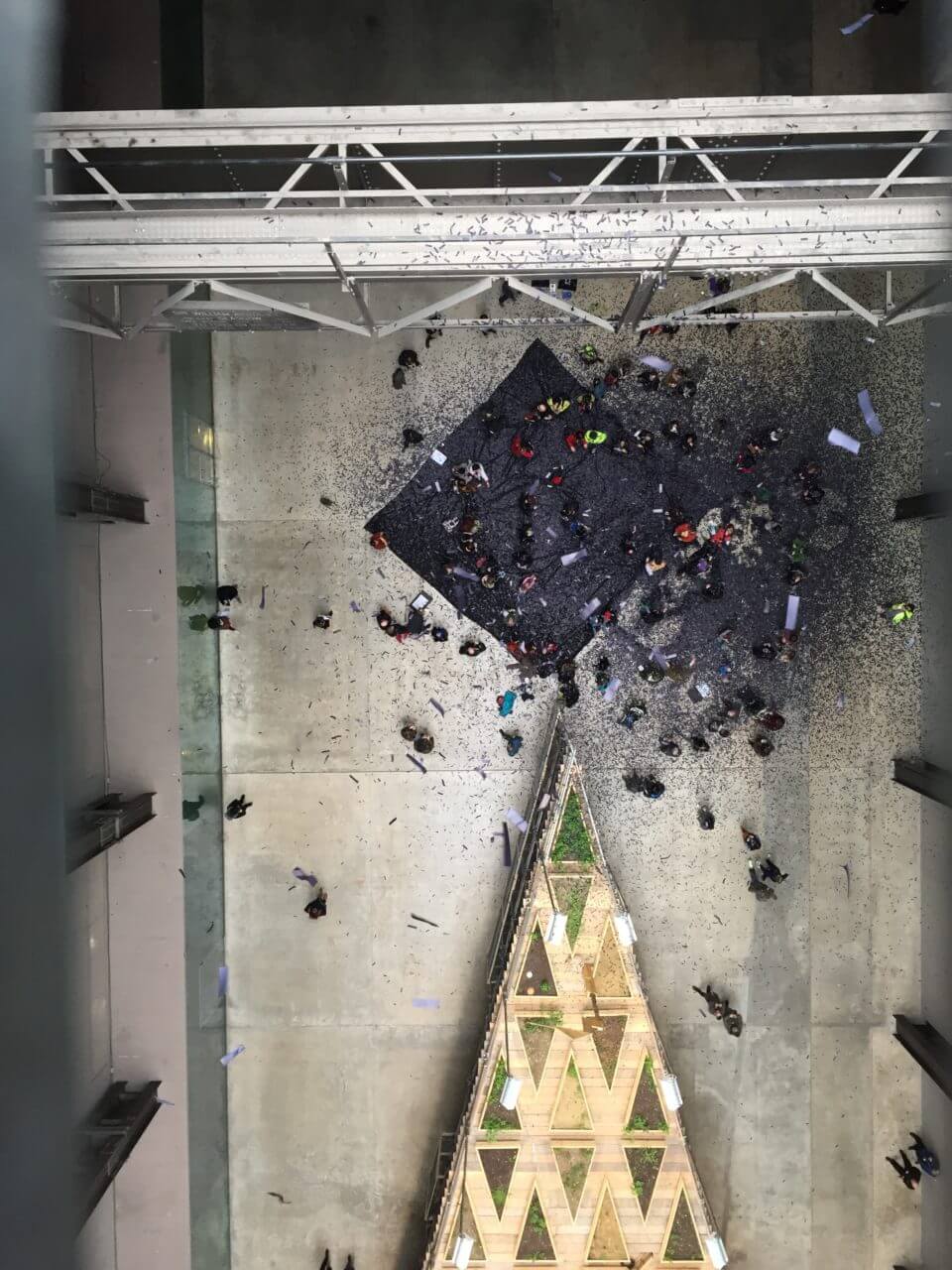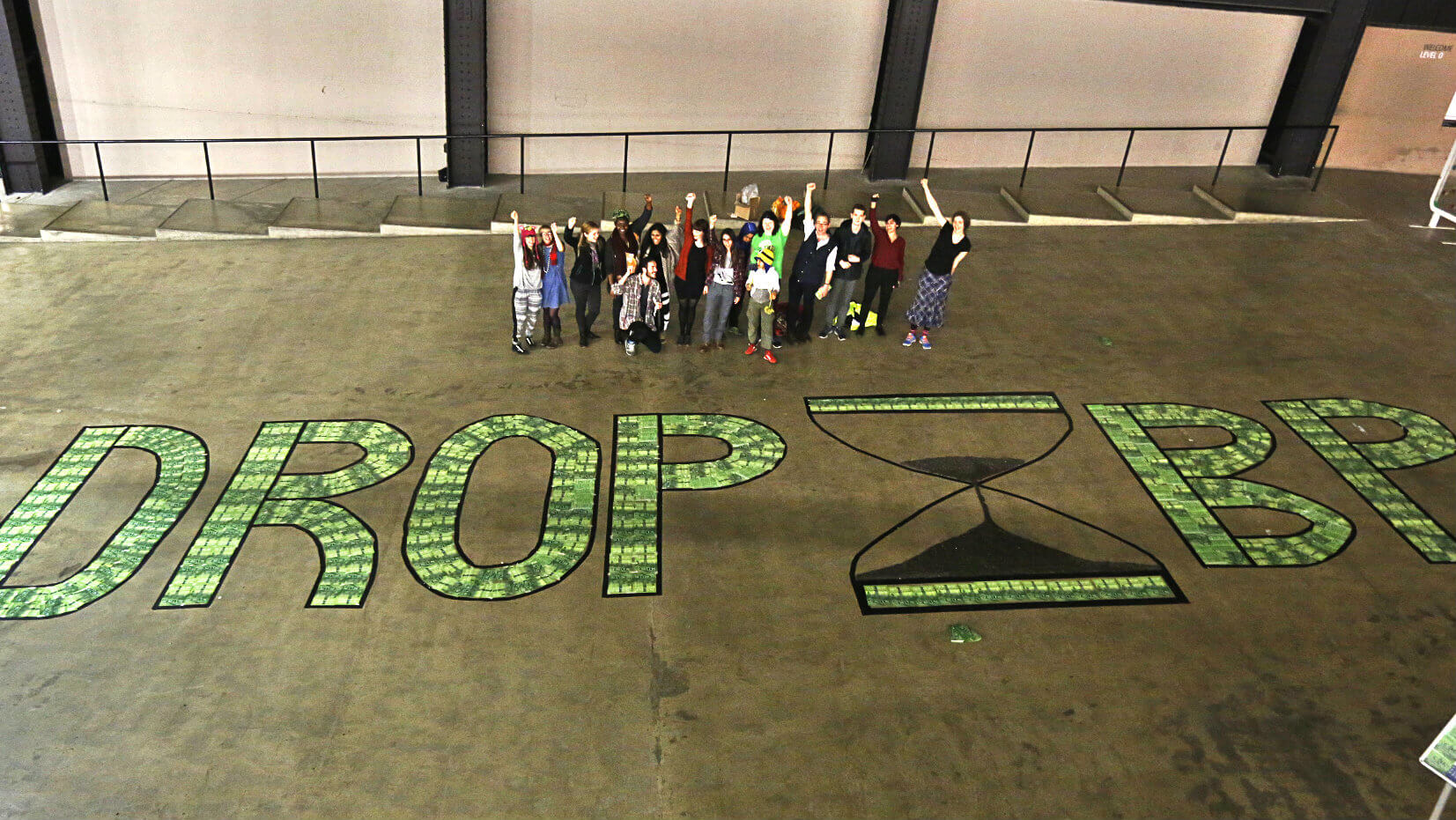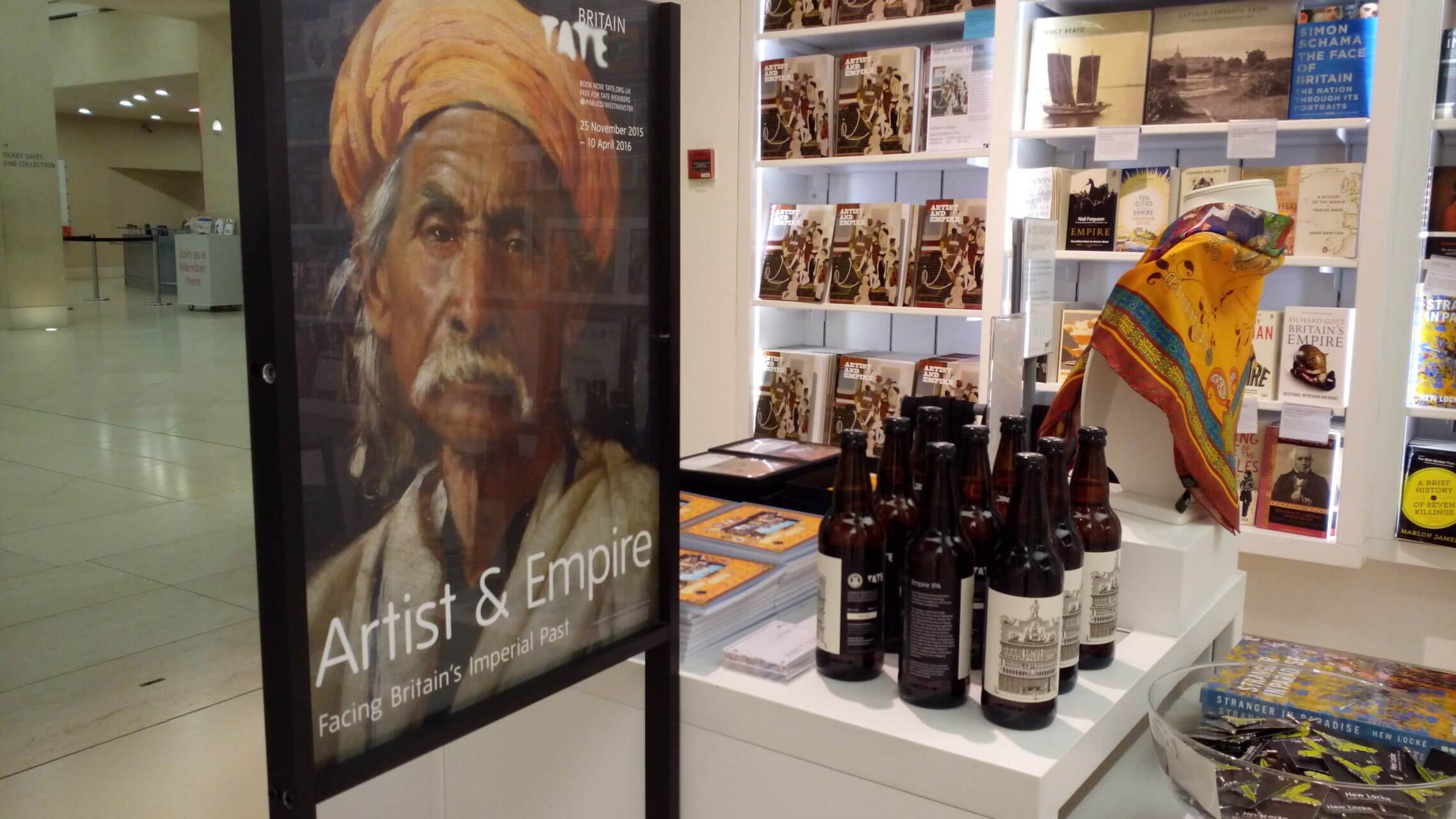Tate’s BP sponsorship is ending. Last Saturday Liberate Tate released a spectacular cloud of confetti through the huge space of Tate’s Turbine Hall to celebrate. In kicking BP out of Tate, the movement for fossil free culture has achieved something that appeared impossible. This post is based on a slideshow we projected inside the Turbine Hall. We put it together to mark the moment, and to remember the ways the work is not yet done, and the ways Tate is yet to be ‘liberated’.

Six years ago Tate celebrated twenty years of BP sponsorship with a Garden Party.
Meanwhile BP’s oil spewed into the Gulf of Mexico.
Meanwhile Gulf Coast fisherfolk and relief workers were looking for treatments for the toxic after-effects of BP’s oil dispersant corexit.
Meanwhile BP’s CEO Tony Hayward was frantically rushing around the world looking for politicians to save his reputation and fill his pockets. Some of these politicians would’ve been at the party at Tate too.
Meanwhile carbon dioxide levels were climbing.
It’s 2016 and we’re finally seeing BP out. Thanks to all of you – you made this happen.
The powerful frontline communities who survive BP’s abuses year on year. The frontline activists who confronted BP inside its AGMs, at its drilling rigs, and inside museums. The artists who spoke up against fossil fuels. The performers who scribbled on the floor, walked, chanted, stayed up through the night, spilled and were spilled onto.The artistic geniuses behind Liberate Tate. The lawyers who confronted Tate in court and made Tate reveal that BP only contributed 0.5% of Tate’s budget. The experts who picked apart Tate’s decision-making. Everyone who emailed or sent postcards to Tate to let the museum know what they thought of the sponsorship deal. Everyone who took over Tate at our unauthorised 3-day Deadline Festival last year, challenging Tate for legitimising fossil fuels and colonial behaviour.
BP can no longer use Tate’s displays to hide the fact that,
It’s 2016 and Gulf Coast fisherfolk are still fighting to get their livelihoods back.
It’s 2016 and a Colombian trade unionist is still fighting for BP’s compensation for his 42-day kidnapping in 2003.
It’s 2016 and BP is the third largest corporate contributor to global warming and the world’s temperatures have just shot past 2 degrees of warming.
It’s 2016 and Tate holds an exhibition called ‘Artist & Empire’ and the only colonial ‘tragedy’ that exhibition refers to is the deaths of British troops in Afghanistan in 1840.

We achieved something that appeared impossible.
Let’s celebrate. And reflect. And remember the work’s not all done.
1
BP’s cultural sponsorships are allowing the company to hide its real work.
“When BP says it has done right for the Gulf, they are lying. Less than 18% of the health claims submitted have been approved and even fewer have actually been paid out. While BP plays games with our media and with our court system, our fishing families are sick and suffering.”
– Thao Vu, Biloxi, Mississippi
“I want people to know that everything is not OK. People, including children, are still suffering from the effects of [BP’s Deepwater Horizon] disaster. We still do not know the long term effects yet. We are talking about hundreds of thousands of lives, not just a single community or household…. Our lives and livelihoods are expendable to them. I am glad you got your life back sir [Tony Hayward, ex BP CEO], now can we have ours too? Maybe it is too late to recover our loss but it is never too late to salvage what remains.”
– Joey Yerkes, Destin, Florida
“Created by inspired souls to inspire other souls, art is supposed to “lift” humanity – not “trick” humanity into ignoring or sanctioning Earth’s greatest avoidable plights or worst global citizens. On the US Gulf Coast, BP is directly responsible for infinitely more death and destruction than “art”, including our ecosystems, livelihoods, ways of life, human health, and government integrity. A giant and unrepentant wrongdoer, BP’s cynical purchase of recognition in the British art world is mere “artful dodging”, closely akin to their shameless posturing and abject pimping of public and private institutions and media in the United States.”
– Derrick Evans, Mississippi Gulf Coast resident
2
“When I was kidnapped I knew what was going to happen to me. I knew I was going to be murdered and left by the side of some road. But thanks to people’s solidarity, both national and international, to an oil workers’ 24-day-long strike, and to demonstrations by communities in Colombia and human rights organisations, it was possible for me not to be executed. Instead, I was held for longer, then finally released.
BP was involved in my 42-day-long kidnapping. [BP is now sponsoring Mexican Day of the Dead events in the British Museum.] How very ironic, that it’ll be paid for with money stained in blood.”
– Gilberto Torres, Colombian trade unionist
3

There’s more to liberate in Tate.
“[Tate’s Artist & Empire exhibition] was Colonialism Lite (TM).
It was gentrified.
It was inconsiderate of the fact that Empire is a genuine historical fact that sometimes people forget was a bad thing, that sometimes people gloss over and brush under the carpet, that they refuse to acknowledge as a factor in current global problems, that the show should have been more than: ‘this happened. I SWEAR IT’S BETTER NOW.’ because it isn’t better now.
I demand acknowledgement.
The one tiny room of contemporary art by powerhouses of excellence like Sonia Boyce and Hew Locke at the end didn’t disrupt the distinct tone of ambivalence.
I truly believe that it is through discourse and education that change occurs, from the roots up change will come. It is the responsibility of the Tate to carry that weight with sincerity. It is a duty, not a compulsion.
Sort ur shit ouT MAN.”
– Zarina Muhammad, The White Pube
“Tate Modern i[is] simply another spatialisation of the savage inequality that’s coming to typify 21st-century London. Working people on modest to low incomes and the unwaged may no longer be able to afford to live in the city, but their children can at least get to experience for a few hours the aristocratic lifestyle of strolling about and looking at expensive stuff. …
The new Tate Modern will thus be not an art gallery per se, but a sort of life-size model of what an art gallery might be should our culture have need of one. … It doesn’t, but rather has a requirement for visitor attractions that reify the ever widening gulf between haves and have-nots.”
“The exhibition’s introductory text states that it “foregrounds the peoples, dramas and tragedies of Empire”. Yet, tellingly, the only subsequent mention of ‘tragedy’ that I could see in the entire exhibition did not refer to any one of the manifold tragedies that befell those colonised by Britain but rather a crushing defeat of the British Army in the first Afghan War of 1839–42. In the caption for Elizabeth Butler’s Remnants of an Army, the retreat of British forces from Kabul, in which the majority of British troops died, is described as a “tragic episode”.
… If the British public are to ever ‘face’ the country’s imperial past honestly and constructively, an exhibition that makes us feel distinctly uncomfortable (if not ashamed) rather than passively interested is what is required, however ‘painful’ that may be.”